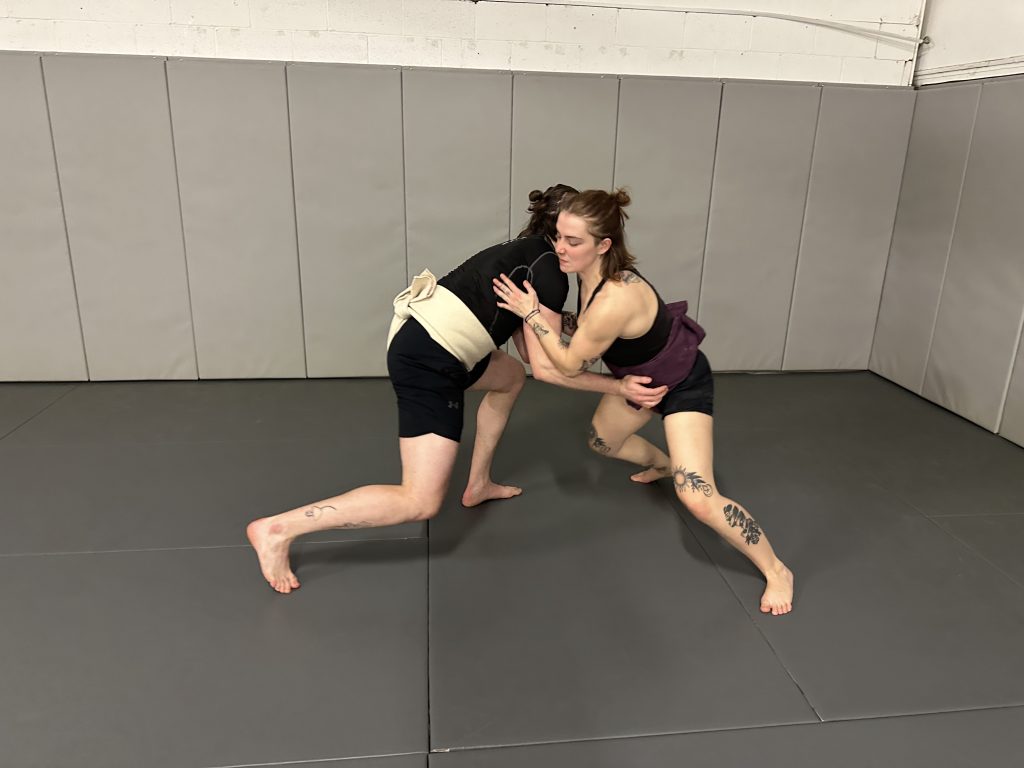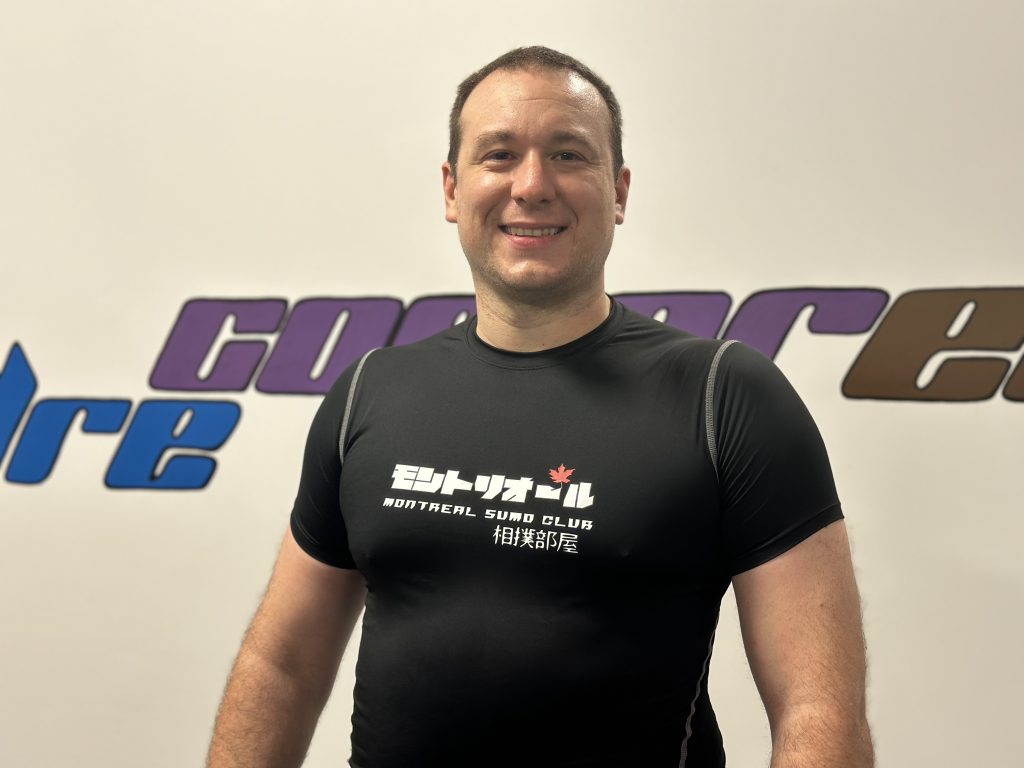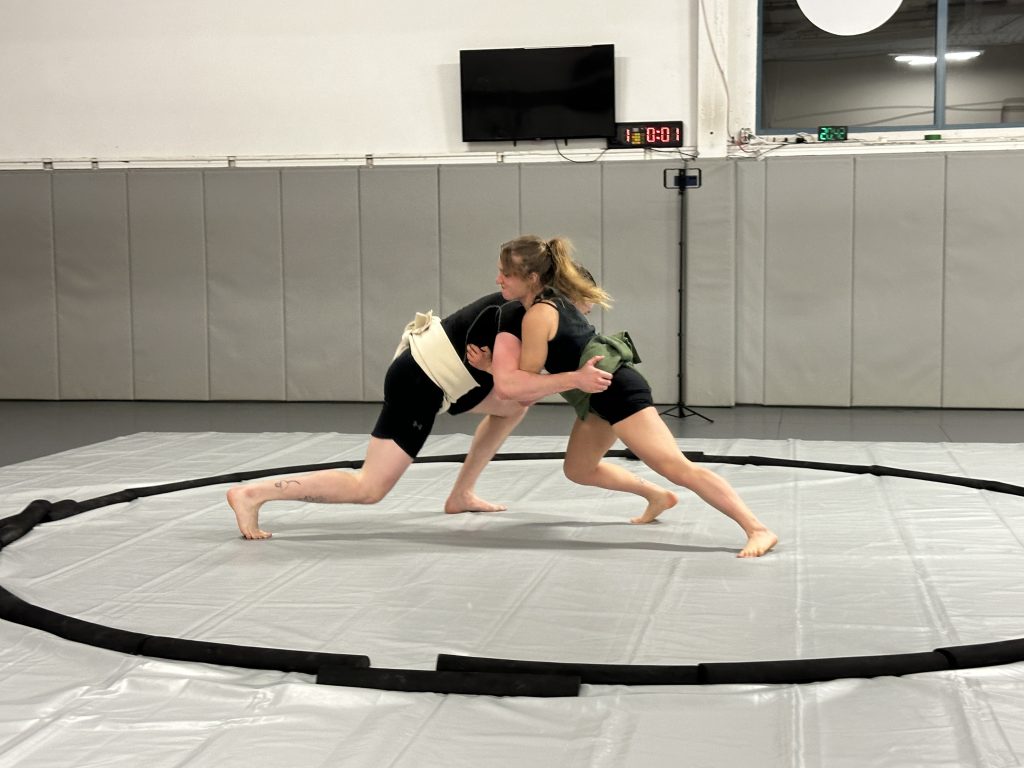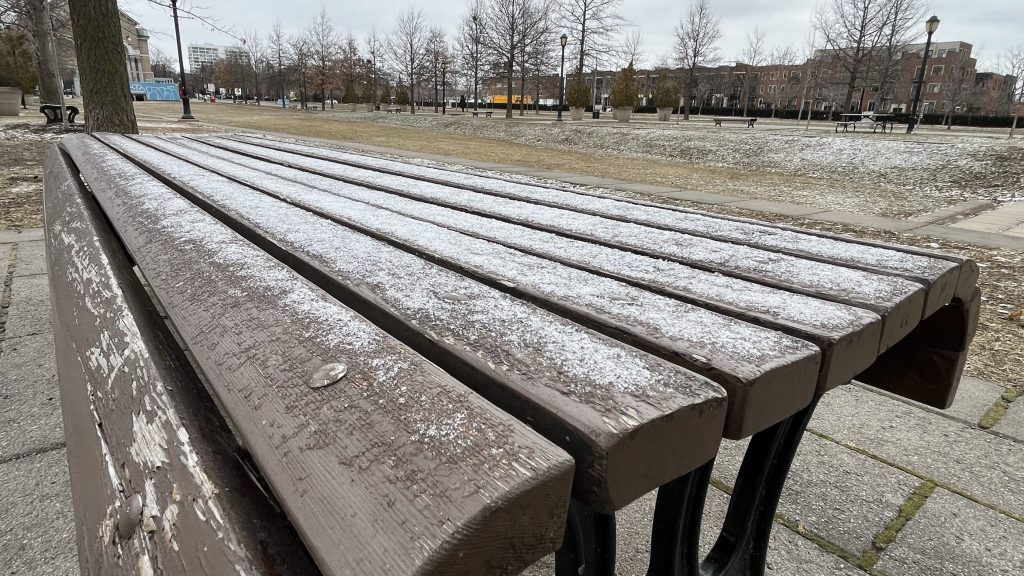Montrealer starts sumo wrestling club to share his love for the sport
Posted November 25, 2024 6:43 pm.
Last Updated November 25, 2024 11:09 pm.
After Montrealer Agustin Gimenez travelled to Japan in 2018 for his honeymoon, he developed an admiration for the country’s national sport: sumo wrestling.
“We travelled around Japan, and on the last day, we went to see the first day of the September tournament in Japan. It was in Tokyo, and it was like a whole-day event. I really loved it. I thought it was really cool, and ever since then, I’ve wanted to try sumo,” said Gimenez.

When he returned from his trip, he joined a judo class as there were no options for sumo wrestling in Montreal.
Soon after, he founded the Montreal Sumo Club with a friend from the class.
“It was basically my idea. I heard that he liked sumo, and I like sumo too. So I made a sumo belt at home and brought it to judo, where I gave it to him. We had a practice outdoors, outside the judo club, in a park. There were other people looking at us, and they all reacted really well. Some of them laughed, and some of them thought it was cool. I told them, ‘You know, why don’t we create a club? Why don’t we train more often?’ And that’s how it came to be,” he said.

Now, he is sharing his love for the sport with others.

“I have enough skills to at least start a club, start training, and learn along the way, you know, and teach other people what I know. We sort of learn together, you know,” he said.
“It’s a lot of fun. Everyone who comes and tries it out really loves it. They tell me it’s really cool,” he added.

“I would say that sumo is a beautiful sport. Training in sumo is lots of fun. If you come and join, you’ll certainly get in shape and you’ll meet interesting people. And most of all, I think you’ll love it and you’ll become a true sumo fan.”

He says the class is welcome to all, starting at 13 years old, as he wants to focus on young and older adults for now. Classes are once a week, on Fridays.
“I’m a little limited in time. Hopefully, with time, I’ll be able to teach kids as well,” Gimenez expressed.
“Anybody is welcome — boys, girls, anybody. No matter if you’re tall, short, skinny, or fat, we love everybody, you know? And that’s the beauty of amateur sumo and the amateur sumo world.
“So there’s an International Sumo Federation. There are competitions, and there are weight categories. So it’s not like professional sumo in Japan, where there’s no weight category, and everybody weighs 300 to 400 pounds. In amateur sumo, you can really be a skinny person, and it’s all right, you know? You can train with us, and you can compete and have fun, which is the most important part.”

Before participants start class, they need to put on a loincloth called a mawashi.
“It’s a piece of cloth, very long — it’s like six yards long. We put it around the waist and in between the legs. Essentially, what it does is allow your opponent to grab you by the belt and throw you or push you. So it’s an essential part of the sumo uniform, if you want,” Gimenez explained.
The rules are fairly simple. Two wrestlers are in the ring, called a dohyo.
“It’s not a perfect circle because it’s like a circle, but it has four cardinal points: east, west, north, and south. It has small openings at those cardinal points. The border of the ring is made up of these straw bales called Tawara.
“Here at the club, we don’t have straw bales; we have something that looks like them, but it’s made out of foam. The setup is really simple. You just need a circle on the ground. If you’re outdoors, you can mark it with sand or any kind of cord, or even with towels or anything you have. So you can start right away with friends if you want to try it out,” said Gimenez.

You can win the bout in one of two ways.
“Either you make your opponent fall to the ground, so they touch the ground with any part of their body that’s not the sole of the feet, or you can push your opponent outside of the ring. So that’s the other way to win. The rules are very simple: you cannot punch, you cannot kick, but you can push and shove your opponent, and you can also apply any technique that would make them fall down, basically,” said Gimenez.
“You can’t really slap your opponent with a swing — that’s illegal in sumo. But you can shove them, let’s say with force, anywhere on their body, including the face,” he added.
Gimenez says that safety is important in his class.
“I prioritize safety, so I make sure that everyone is conscious of their own skill level and their opponent’s skill level. So far, we’ve been able to avoid injury, and I intend to keep it that way.”
For Anthony Grivel, he has been a part of this class since it began.

“I think sumo is a really all-round sport. There are men and women of all sizes. It’s a contact sport, it’s a physical sport, it’s a sport where you have to push yourself to succeed and it’s very, very competitive and very exciting,” he said.
Others like Montrealer Pierra El Kazzi are trying the class for the first time.

“I’m a big fan of sumo, so I do follow the tournaments in Japan, and I’ve been interested in it for a while. I saw that there was a club in Montreal, which kind of surprised me because I honestly thought all of them were in Japan. So I was like, “Okay, let me just try some amateur sumo because I’ve heard of it,” she said.
Gimenez mentioned there are other sumo clubs in Canada.
“There are two well-established clubs, one in Toronto and one in Vancouver, but they’re still relatively small, and so the sport of sumo is still very small in Canada,” he expressed.
He remains determined to grow his skills, and continue spreading the word about the sport.
“I hope we can continue and grow and, you know, hopefully one day we’ll spread the word in Quebec and the rest of Canada,” he said.








